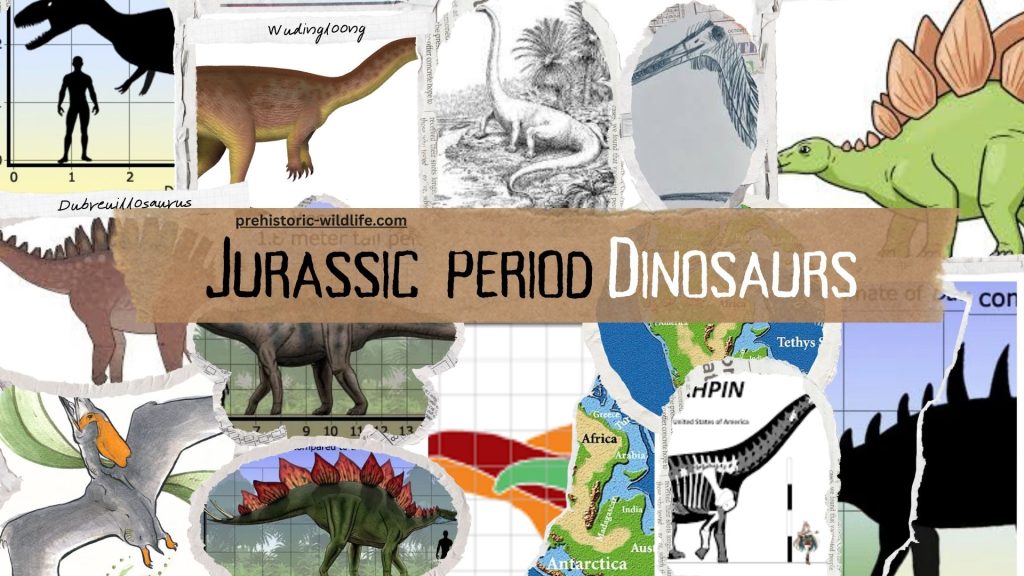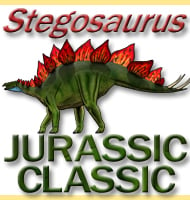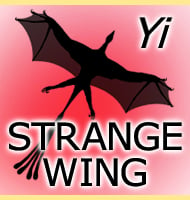Also Read: Triassic Dinosaurs , Cretaceous Dinosaurs
Read 280+ Jurassic Dinosaurs from the Early Jurassic (201.3 to 174.7 million years ago) to the Late Jurassic (161.5 to 145.0 million years ago).
Each entry shows the exact time span, diet, and estimated size.
Click any name to open that species page, where you can read a full description, fossil history, size estimates / Comparisons, and source references.
Every Species Mentions its Epoch and Age, For example: Allosaurus – Time Period: Kimmeridgian age of the Late Jurassic.
The Jurassic Period was the middle part of the Mesozoic Era, lasting from about 201 to 145 million years ago.
During this time, the Earth was warm and wet, with no polar ice caps.
Thick forests of conifers, ferns, and cycads covered the land, creating perfect homes for many animals.
- Jurassic (201.3 – 145.0 Mya)
- Early Jurassic (201.3 – 174.7 Mya)
- Hettangian (201.3 – 199.5 Mya)
- Sinemurian (199.5 – 192.9 Mya)
- Pliensbachian (192.9 – 184.4 Mya)
- Toarcian (184.4 – 174.7 Mya)
- Middle Jurassic (174.7 – 161.5 Mya)
- Aalenian (174.7 – 170.9 Mya)
- Bajocian (170.9 – 168.2 Mya)
- Bathonian (168.2 – 165.3 Mya)
- Callovian (165.3 – 161.5 Mya)
- Late Jurassic (161.5 – 145.0 Mya)
- Oxfordian (161.5 – 154.8 Mya)
- Kimmeridgian (154.8 – 149.2 Mya)
- Tithonian (149.2 – 145.0 Mya)
- Early Jurassic (201.3 – 174.7 Mya)
For Detailed Time Period Refer to Time Period Page.
Dinosaur Diversity in the Jurassic Period

Dinosaurs of the Jurassic included many famous giants and a variety of specialists. Sauropods (long-necked herbivores) dominated the landscape by their sheer size. For example, Brachiosaurus reached about 16 m tall and 26 m long (weighing tens of tonnes), and Diplodocus grew around 24–26 m long.
These immense sauropods likely deterred predators by size alone. The carnosaur Allosaurus was the apex predator of its time, at about 8–9 m long.
It hunted in Late Jurassic North America (the Morrison Formation) and is thought to have preyed on sauropods, stegosaurs, and other herbivores.
The plated stegosaur Stegosaurus (Late Jurassic, 155–145 Mya) was a common armored herbivore, protecting itself with tail spikes and back plates. Early ornithopods like Camptosaurus and other herbivores also grazed the forests
By the Late Jurassic, the first true birds appeared (e.g. Archaeopteryx), having evolved from small coelurosaurian theropods. The oldest known bird fossil dates to this time.
Flying pterosaurs ruled the skies, and small early mammals scurried in the underbrush, but dinosaurs remained the most prominent land animals.
In short, Jurassic ecosystems were ruled by dinosaurs: enormous sauropods and stegosaurs as primary herbivores, large theropods like Allosaurus as top predators, and increasingly complex faunal communities. This “golden age of dinosaurs” lasted roughly 180 million years.
End of Jurassic
The Jurassic ended around 145 million years ago without a single massive extinction event. Instead, the Jurassic–Cretaceous transition was relatively gradual.
Many Jurassic genera gave way to new Cretaceous forms, but dinosaur lineages as a whole continued. In other words, dinosaurs did not die out at Jurassic’s end – they persisted and further diversified in the Cretaceous.
Environmental changes and continued continental breakup led to shifts in dinosaur faunas, but no cataclysm like the later asteroid impact occurred here.
FAQ’s
Which dinosaurs dominated the Jurassic?
The Jurassic was dominated by giant sauropods (long-necked herbivores) and large theropod predators. Brachiosaurus and Diplodocus were among the largest herbivores, while Allosaurus was a dominant carnivore. Other major groups included stegosaurs (like Stegosaurus) and early ornithopods.

